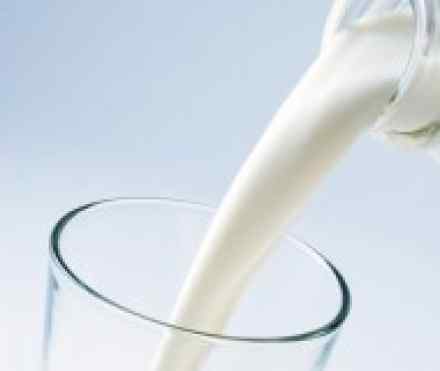
What is it?
Lactose intolerance, also called lactase deficiency, means you aren't able to fully digest the milk sugar (lactose) in dairy products. It's usually not dangerous, but symptoms of lactose intolerance can be uncomfortable.
The problem behind lactose intolerance is a deficiency of lactase — an enzyme produced by the lining of your small intestine. Many people have low levels of lactase, but most don't experience signs and symptoms. Only people with both low lactase levels who also have associated signs and symptoms have, by definition, lactose intolerance.
You can control symptoms of lactose intolerance by carefully choosing a diet that limits dairy products.
Symptoms
The signs and symptoms of lactose intolerance usually begin 30 minutes to two hours after eating or drinking foods that contain lactose. Common signs and symptoms include:
Symptoms are usually mild, but they may sometimes be severe.
Causes
Lactose intolerance is caused by low levels of the enzyme lactase in your small intestine that lead to signs and symptoms.
Normally, the cells that line your small intestine produce an enzyme called lactase. The lactase enzyme attaches to lactose molecules in the food you eat and breaks them into two simple sugars — glucose and galactose — which can be absorbed into your bloodstream.
Without enough of the lactase enzyme, most of the lactose in your food moves unprocessed into the colon, where the normal intestinal bacteria interact with it. This causes the hallmarks of lactose intolerance — gas, bloating and diarrhoea.
There are three types of lactose intolerance.
Normal result of aging for some people (primary lactose intolerance)
Normally, your body produces large amounts of lactase at birth and during early childhood, when milk is the primary source of nutrition. Usually your lactase production decreases as your diet becomes more varied and less reliant on milk. This gradual decline may lead to symptoms of lactose intolerance.
Result of illness or injury (secondary lactose intolerance)
This form of lactose intolerance occurs when your small intestine decreases lactase production after an illness, surgery or injury to your small intestine. It can occur as a result of intestinal diseases, such as celiac disease, gastroenteritis and an inflammatory bowel disease like Crohn's disease. Treatment of the underlying disorder may restore lactase levels and improve signs and symptoms, though it can take time.
Condition you're born with (congenital lactose intolerance)
It's possible, but very rare, for babies to be born with lactose intolerance caused by a complete absence of lactase activity. This disorder is passed from generation to generation in a pattern of inheritance called autosomal recessive. This means that both the mother and the father must pass on the defective form of the gene for a child to be affected. Infants with congenital lactose intolerance are intolerant of the lactose in their mothers' breast milk and have diarrhea from birth. These babies require lactose-free infant formulas.
Risk factors
Factors that can make you or your child more prone to lactose intolerance include:
- Increasing age. Lactose intolerance becomes more common as you age — the condition is uncommon in babies and young children.
- Ethnicity. Lactose intolerance is most common in black, Asian, Hispanic and American Indian people.
- Premature birth. Infants born prematurely may have reduced levels of lactase, because this enzyme increases in the fetus late in the third trimester.
- Diseases affecting the small intestine. Small intestine problems that can cause lactose intolerance include bacterial overgrowth, celiac disease and Crohn's disease.
- Radiation to the abdomen. If you've received radiation therapy for cancer in your abdomen, you have an increased risk of lactose intolerance.
Diagnosis
Your doctor may suspect lactose intolerance based on your symptoms and your response to reducing the amount of dairy foods in your diet. Your doctor can confirm the diagnosis by conducting one or more of the following tests:
- Lactose tolerance test. The lactose tolerance test gauges your body's reaction to a liquid that contains high levels of lactose. Two hours after drinking the liquid, you'll undergo blood tests to measure the amount of glucose in your bloodstream. If your glucose level doesn't rise, it means your body isn't properly digesting and absorbing the lactose-filled drink.
- Hydrogen breath test. This test also requires you to drink a liquid that contains high levels of lactose. Then your doctor measures the amount of hydrogen in your breath at regular intervals. Normally, very little hydrogen is detectable. However, if your body doesn't digest the lactose, it reaches your colon and ferments, causing hydrogen and other gases to be released, absorbed by your intestines and eventually exhaled. Large amounts of exhaled hydrogen measured during a breath test indicate that you aren't fully digesting and absorbing lactose.
- Stool acidity test. For infants and children who can't undergo other tests, a stool acidity test may be used. Undigested lactose ferments in the colon, creating lactic acid and other acids that can be detected in a stool sample. The lactose tolerance test and the hydrogen breath test may be dangerous for infants and children who can't tolerate high levels of lactose required for those tests.
References
http://www.webmd.com/digestive-disorders/tc/lactose-intolerance-topic-overview
http://www.irishhealth.com/article.html?con=25
https://www.hse.ie/eng/health/az/L/Lactose-intolerance/
http://www.healthline.com/symptom/lactose-intolerance

